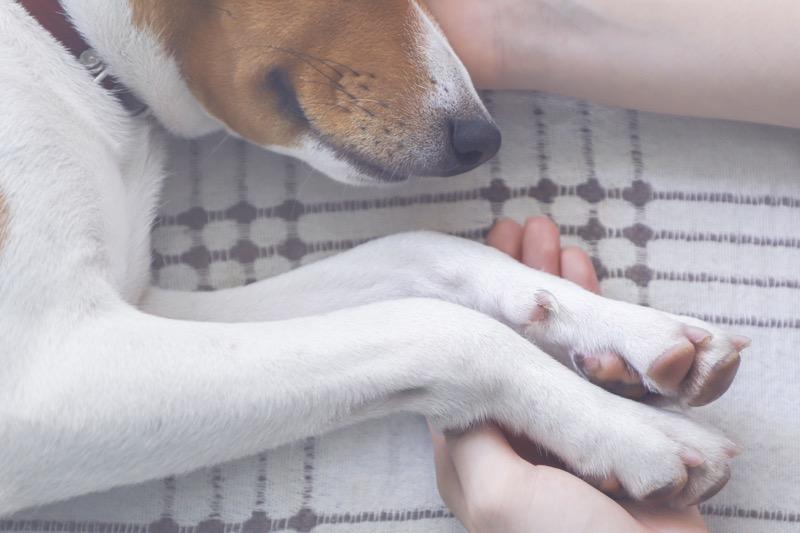How to Know When to Put Your Dog Down
- June 21, 2021
- Planning

Deciding when to put your dog down is one of the most heart-wrenching decisions a pet owner can make. It’s a topic filled with emotional complexity, and making the right choice involves both heart and mind. Understanding when the time has come to say goodbye is crucial not only for your pet’s comfort but also for your peace of mind. This comprehensive guide will help you navigate this difficult decision with compassion and clarity.
Understanding Pet Memorials
Before diving into the specifics of making this decision, it’s helpful to think about the role of Pet Memorials. These services provide a meaningful way to honor and remember your beloved companion. Whether you choose a simple plaque, a custom urn, or a full memorial service, these options allow you to celebrate your pet’s life and legacy. For more details on how you can create a lasting tribute, visit our Pet Memorials page.
Signs It Might Be Time to Say Goodbye
- Persistent Pain or Discomfort
One of the most common indicators that it might be time to consider euthanasia is persistent pain or discomfort that cannot be managed with medication. Dogs are generally very good at hiding pain, so look for signs such as difficulty in movement, unusual vocalizations, or changes in behavior. If your dog seems to be suffering more than they are enjoying life, it may be time to consult with your veterinarian about their quality of life. - Loss of Appetite
A noticeable loss of appetite or refusal to eat can be a significant sign of declining health. While this could be due to various issues, a chronic lack of interest in food can indicate that your pet’s condition is worsening. Discuss these changes with your vet to understand whether this is part of a larger issue and what it might mean for your dog’s overall well-being. - Incontinence and Loss of Control
Incontinence or the loss of control over bowel and bladder functions can be distressing for both your pet and you. While some medical conditions can be managed, persistent incontinence along with other signs of deterioration might suggest that your pet is nearing the end of their journey. - Severe Weight Loss or Physical Deterioration
Significant weight loss and a decrease in muscle mass are clear indicators of a serious problem. If your dog’s body is visibly wasting away and they are losing strength, it’s essential to evaluate their quality of life. Your vet can help assess whether these changes are reversible or if they signify a final stage of illness.
Consult with Your Veterinarian
Your veterinarian is an invaluable resource when making this decision. They can provide a professional assessment of your pet’s condition and guide you through the process. Discuss your observations, concerns, and the potential benefits of euthanasia to determine the best course of action. Remember, your vet’s goal is to ensure the welfare of your pet, and they can help you make a compassionate choice.
Making the Decision
The decision to euthanize a beloved pet is never easy. It often involves a deep emotional struggle and a lot of personal reflection. It’s essential to weigh your pet’s quality of life against the pain they may be experiencing. Focus on your pet’s overall happiness and well-being rather than just their survival.
Planning a Pet Memorial
After making the decision, you may want to plan a Pet Memorial to honor your pet’s life. This can be a comforting way to cope with your loss and provide a lasting tribute to your companion. Explore the various memorial options available to find a fitting tribute.
Submit an Obituary
Sharing your pet’s story can be a heartfelt way to honor their memory. Consider submitting an obituary to commemorate their life and share their legacy with others.
FAQ Section
How can I tell if my dog is in pain?
Look for signs such as difficulty moving, vocalizations, or behavioral changes. Consult with your vet for a thorough assessment.
What are some signs that my dog’s quality of life is decreasing?
Persistent pain, loss of appetite, incontinence, and severe weight loss are indicators that your dog’s quality of life may be declining.
How do I plan a Pet Memorial?
Visit our Pet Memorials page for information on various memorial options to honor your pet’s life.
Can I get help with creating an obituary for my pet?
Yes, you can submit an obituary to commemorate your pet and share their story with others.
What should I discuss with my veterinarian when considering euthanasia?
Talk about your observations, your pet’s quality of life, and the potential benefits of euthanasia to make an informed decision.
Related Articles

What Happens to Bonded Dogs When One Dies?
- August 12, 2022
- Celebrations of Life

How Do You Know If It’s Time to Put Your Bird Down?
- September 13, 2021
- Planning

What Happens to Bonded Cats When One Dies?
- August 30, 2021
- Celebrations of Life

What Kind of Behavior Does a Dog Exhibit Before Death?
- August 8, 2021
- Planning

What to Do When Your Pet Passes Away at Home
- July 24, 2021
- Planning
Search Articles
Sign Up For Our
Newsletter
Stay up to date on resources to help you prepare.